Traditional oil painting
Original creation and promotion of artistic works, which reflect the deep human culture.

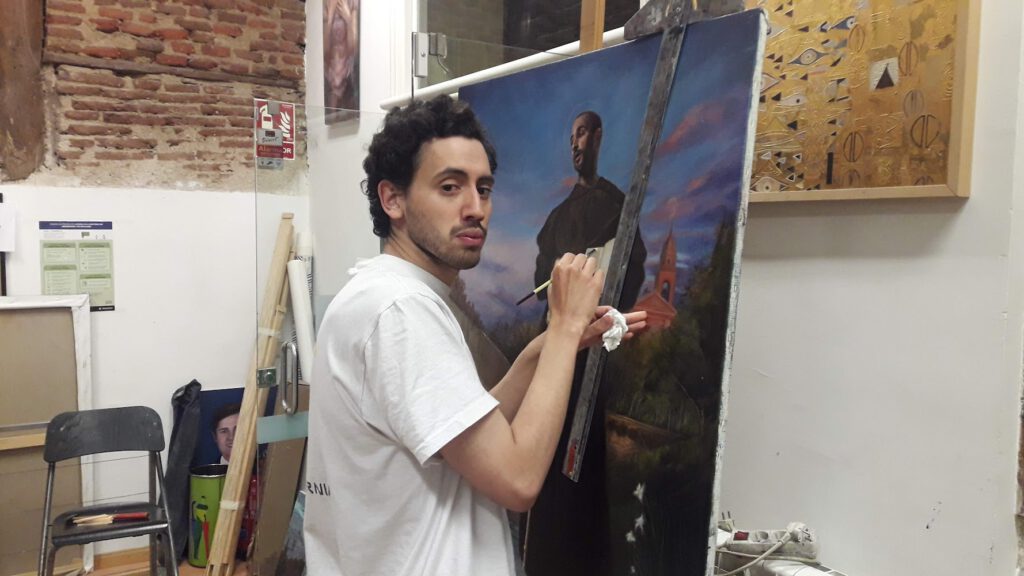
Antonio Decinti
(Santiago de Chile, 1995)
Antonio Decinti was born in Santiago de Chile and moved to Madrid, Spain, in 2002. He belongs to a family of artists. He received instruction in preparation and framing of holders for oil painting, production of exhibitions, drawing, and oil painting with his father, Alejandro Decinti, and the painter Óscar Villalón.
He holds a degree in arts applied to sculpture from the Escuela de Arte La Palma, where he acquired knowledge on sculpting techniques in wood, clay, metal and mold production.
He studied History of Art iat the UCM (Universidad Complutense de Madrid).
Currently, he teaches both privately and at the art academy Decinti & Villalón (oil painting and drawing). He also akes part in exhibitions and helps in the production of paintings of his father.
Art as a form of tradition needs to be defended, western culture is the highest expression of everything that has been created. Under the protection of the Catholic Church, it has produced the best masterpieces that history has ever known. The new tendencies of postmodernist thinking, undermine the tradition that I stand up for in my paintings, a tradition that runs throughout themes of Spanish culture such as: bullfighting, flamenco, religious subjects, lives of saints. Traditional painting is what I wish to teach, because this kind of art is what imparts truth and beauty to the world.
I have been very influenced by the Little Flowers of Saint Francis of Assisi in my religious paintings. Also, by Federico García Lorca in his writings about bullfighting, as El Romancero Gitano and La teoría del duende, where Lorca talks about inspiration, in this case, flamenco, which can also be applied to every form of artistic creation. Such inspiration arises from an overly human feeling, which grows and brings the artist to the point where he reaches the creator. The “duende” cannot be found in everybody, it is a grace given by God to create and help his community. It is a mysterious power that everyone can feel but no one, not even the greatest thinkers, can explain. It is as though an angel enlightens the artist, allowing him to almost without exertion God wants it to happen, it will happen, regardless of human capacity or limitations.
Whenever el Greco or Goya painted, it was not important if the technique was not perfect nor if the result was impeccable, they merely heeded their “duende” in their paintings.
The “duende” is something innate in Spain, where death is very present the biggest festivity is bullfighting, a death battle that can only be accomplished in the most perfect way, which is death, just like mass, where you worship and sacrifice God, the famous bullfighter Manolete was a perfect exponent of that.
He works with oil painting, he considers it to be the best technique, because of its characteristics and creative potential, and also, because of its conservation. Realist painting as a universal language it is the world where we live at, and thus this, the ideas that need to be transmitted, are well-received by the spectator.
Video
Antonio Decinti: en la mente de un joven pintor
Video by Démontrer Studios
Paintings
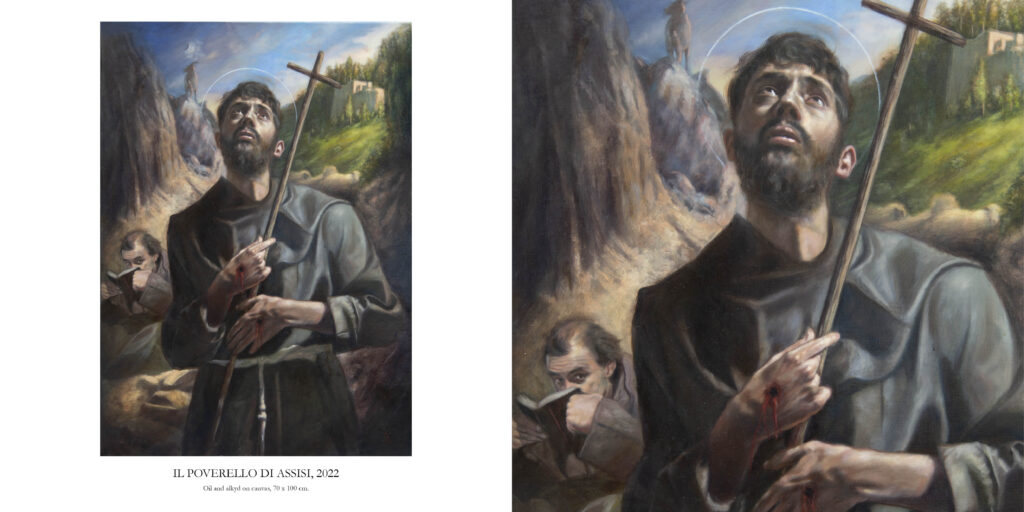
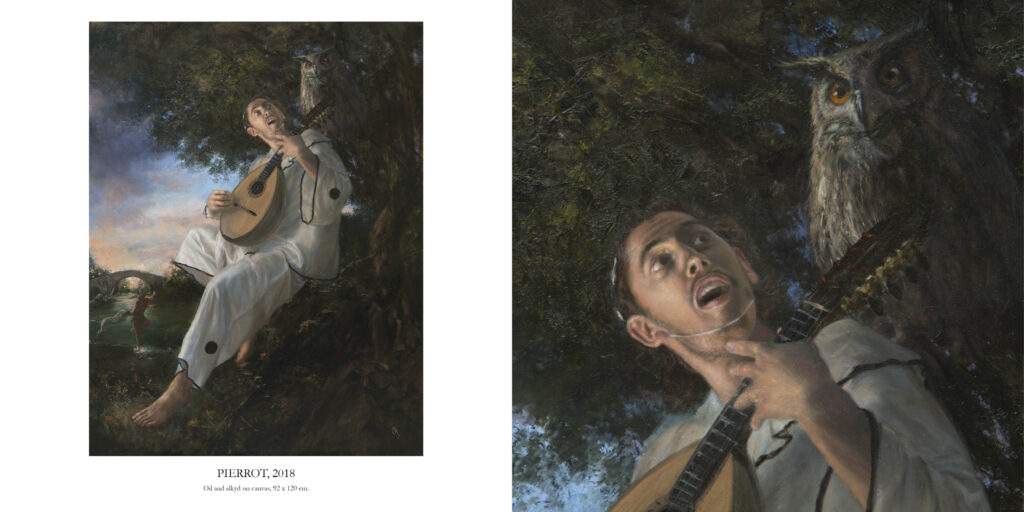

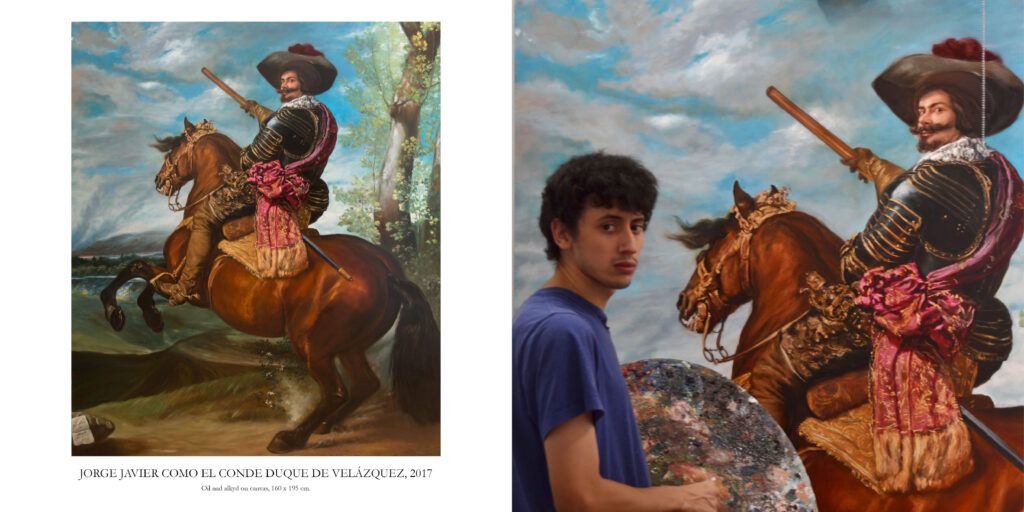
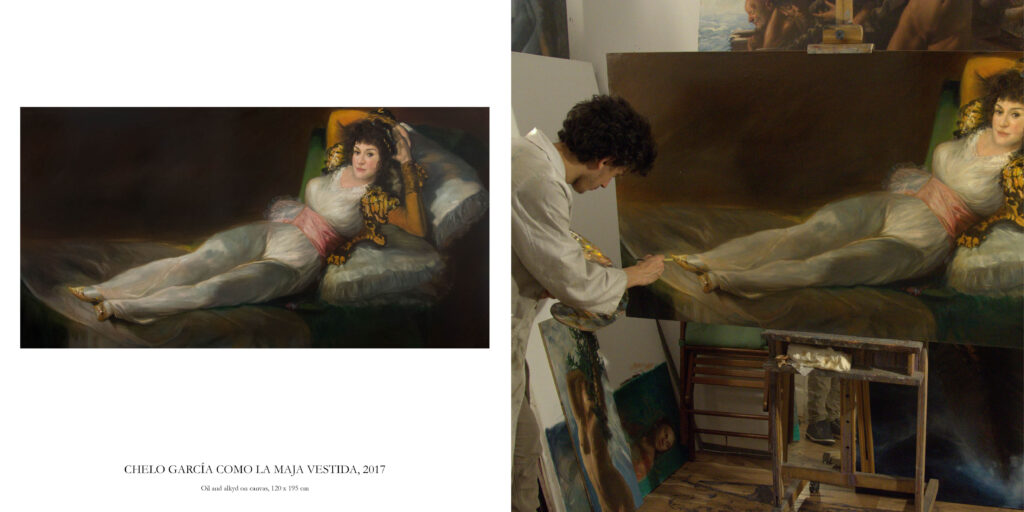

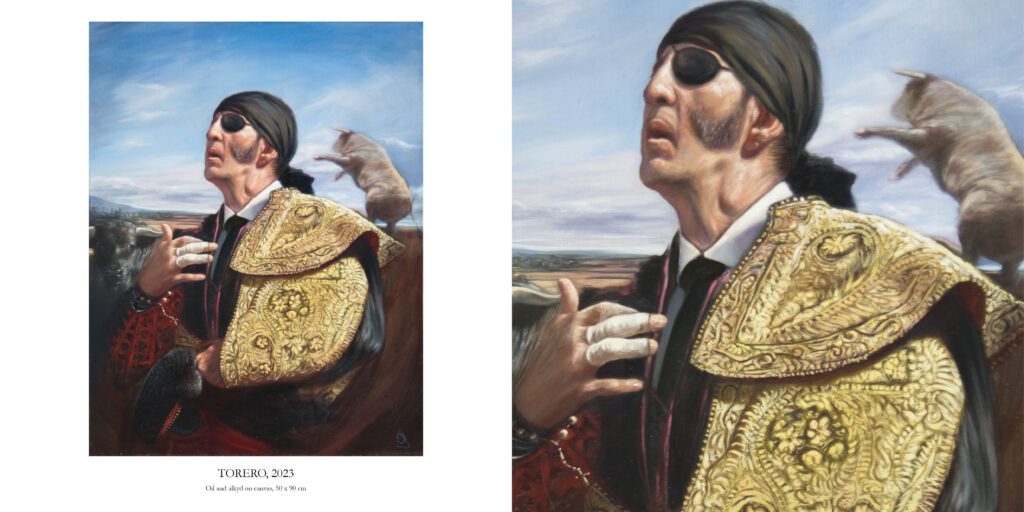
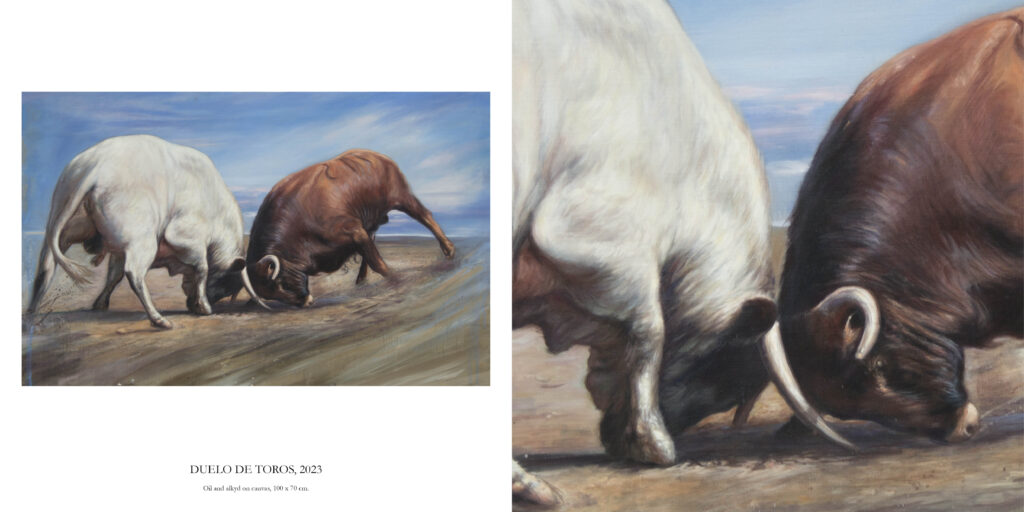

Alejandro Decinti
(Santiago de Chile, 1973)
Italian-Chilean painter, graduate in Fine Arts from the University of Chile, based in Spain since 2001. Awarded with the Academic Excellence Scholarship in the 1991 admission process to Chilean universities. First prize in the Arte en Vivo contest in 1994 and awarded a postgraduate grant from Fundación Arte y Autores Contemporáneos in 2001. Founder of the Decinti Villalón art project in Madrid, 2003, together with Chilean-Spanish artist Oscar Villalón.
He has been a collaborator and promoter of the Ramírez Máro Institute project since 2009, together with German artist Rafael Ramírez Máro. In 2011 he founded DeArtibus, an art project in Barcelona, up until 2013. In 2019 he founded the group El Bloque, a DeCinti Villalón project, in Mexico with Mexican artist Heder Contreras. He has participated in numerous solo and group exhibitions in Europe and America.
Deeply inspired by the philosophy of Saint Thomas Aquinas, Cornelio Fabro, Christian Ferraro and Étienne Gilson. He embraced the challenge of the Vatican’s Pontifical Council for Culture In 2020 to investigate and develop his work along the path of the “Via Pulchritudinis”. He actively combats the anti-Catholic black legend, historical falsification and philosophical errors that wear down Western Christian society through modernist, secularist, materialist and atheist art and culture, thus contributing to the cultural counter-revolutionary movement for sound doctrine and in obedience to the Holy Catholic Apostolic and Roman Church.
Themes
The artist presents a subtle connection of five great thematic cycles: theology, moralism, Greco-Latin mythologies, Mayan and Mapuche mythology. He is always mindful of the major difficulty involved in each of them due to their respective grandeur and complexity they entail. This diversity is shared by the foundational aspect of humans’ history, culture and soul. Through the common metaphysical experience of the being, as humanity and its transcendental relationship with the reality that pervades it overflows, exalting its natural sense of the divine to reach levels of supernaturalness essentially determined by the proximity of the theological truth of revelation. Research and artistic, philosophical, and spiritual development. His work delves into the wide-ranging concerns of his most personal proposal, initially dark and blurred, only illuminated by faint flashes of intuition, which has been clarified and consolidated through a process that reflects his honesty and effort, making it a very personal contemporary painting proposal with a traditional technical and thematic approach. It attempts to delve into the original mysteries of conscience and freedom hidden in the good Lord’s unfathomable silence.
Via Pulchritudinis : In the theology cycle, he attempts to bring the Christian Eastern and Western iconographic contributions into play, gathered and updated with a personal contemporary sensibility. The artist is aware of the difficulty involved in this challenge, and therefore chooses the main milestones of the revelation, presented in the traditional scheme of the Holy Rosary, to progressively broaden and perfect the proposals while going into depth into the mystery of spirituality.
Ship of fools: The moralist cycle is based on the satirical work Ship of fools, published in Basilea in the 15th century (original German title Das Narrenschiff; Latin translation Stultifera Navis) written by Sebastian Brand. In a succession of 112 critical episodes, each accompanied by an engraving, it criticizes the vices of his time by denouncing different types of foolishness or stupidity. A reflection on the theme of evil and its foundation in the human radical metaphysical freedom.
Greco-Latin Mythology: In the cycle of Greco-Latin mythology, the painter offers a re-reading of Ovid’s Metamorphoses, a brilliant poetic work in fifteen books published in 8 A.D., which narrate the history of the world from its creation to the deification of Julius Caesar, combining mythology and the history of the time with exceptional beauty and freedom.
American mythology: In the Mayan mythological cycle, the artist seeks to represent in a traditional Western styles the stories that are depicted in the book Popol Vuh, also known as The Council Book, presumably a compilation of texts and oral stories from the 16th century gathered by Fray Francisco Ximénez. Much of the wisdom and Mayan traditions is treasured in a compendium of aspects of great importance such as religion, astrology, mythology, customs, history and legends that tell the story of the origin of the world and civilization as well as the many phenomena that occur in nature.
Chilean mythology: In the cycle of Mapuche mythology the artist relies on the exciting research work entitled “Trentrenfilú” by the Italian Alberto Trivero. He managed to travel and interview several southern Chilean settlers at the end of the 20th century and through sheer perseverance gathered the main cosmogonic myths that has been transmitted from generation to generation. An ethnic group immortalized in the important 16th century Spanish epic poem “La Araucana” by Don Alonso de Ercilla, which will be the source of a new cycle of paintings on the formation of Chilean identity.
Paintings
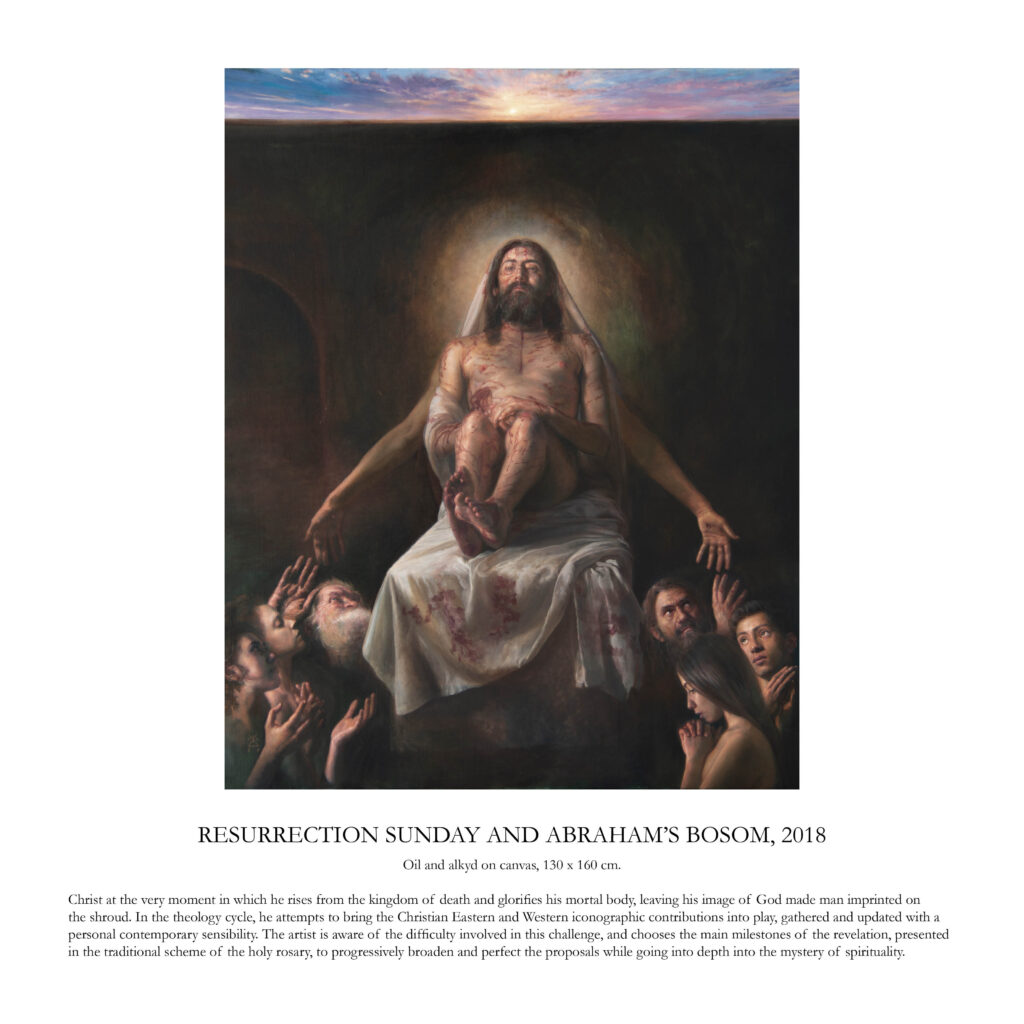

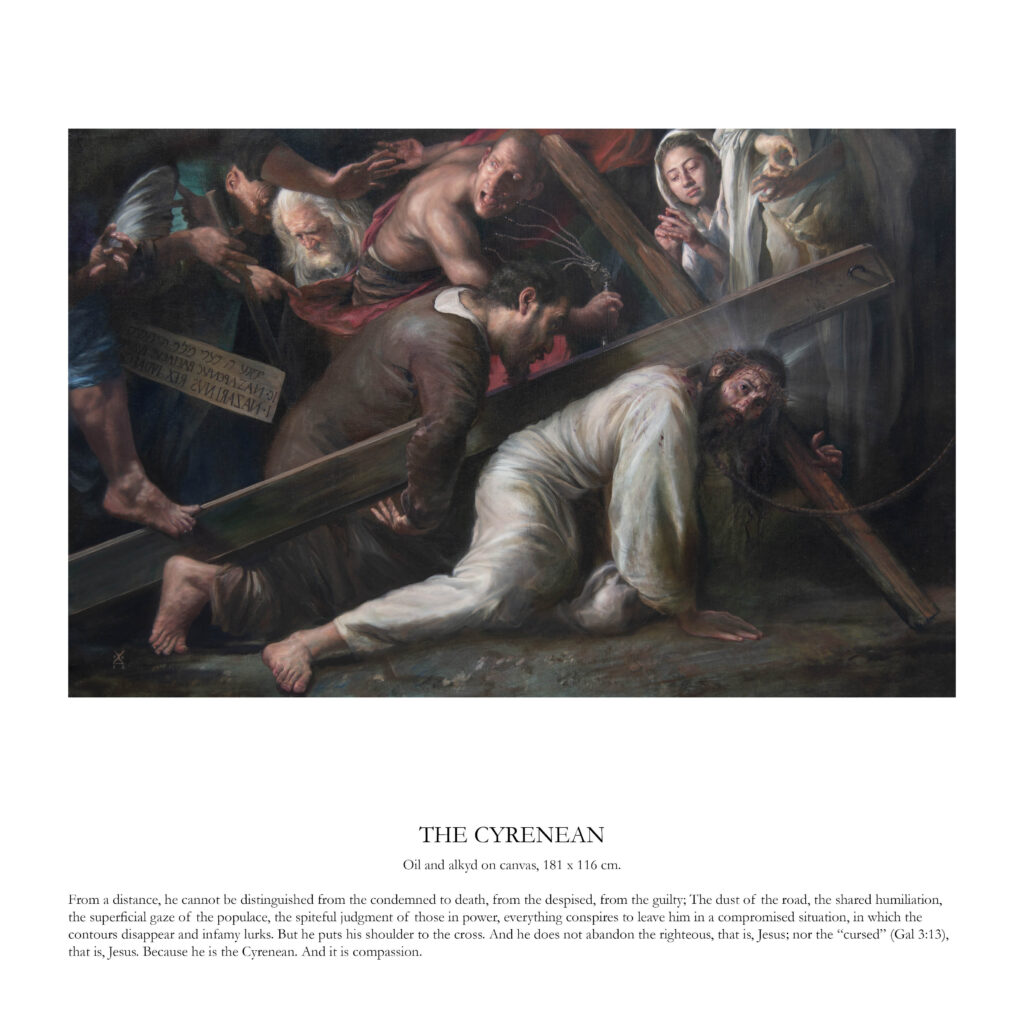
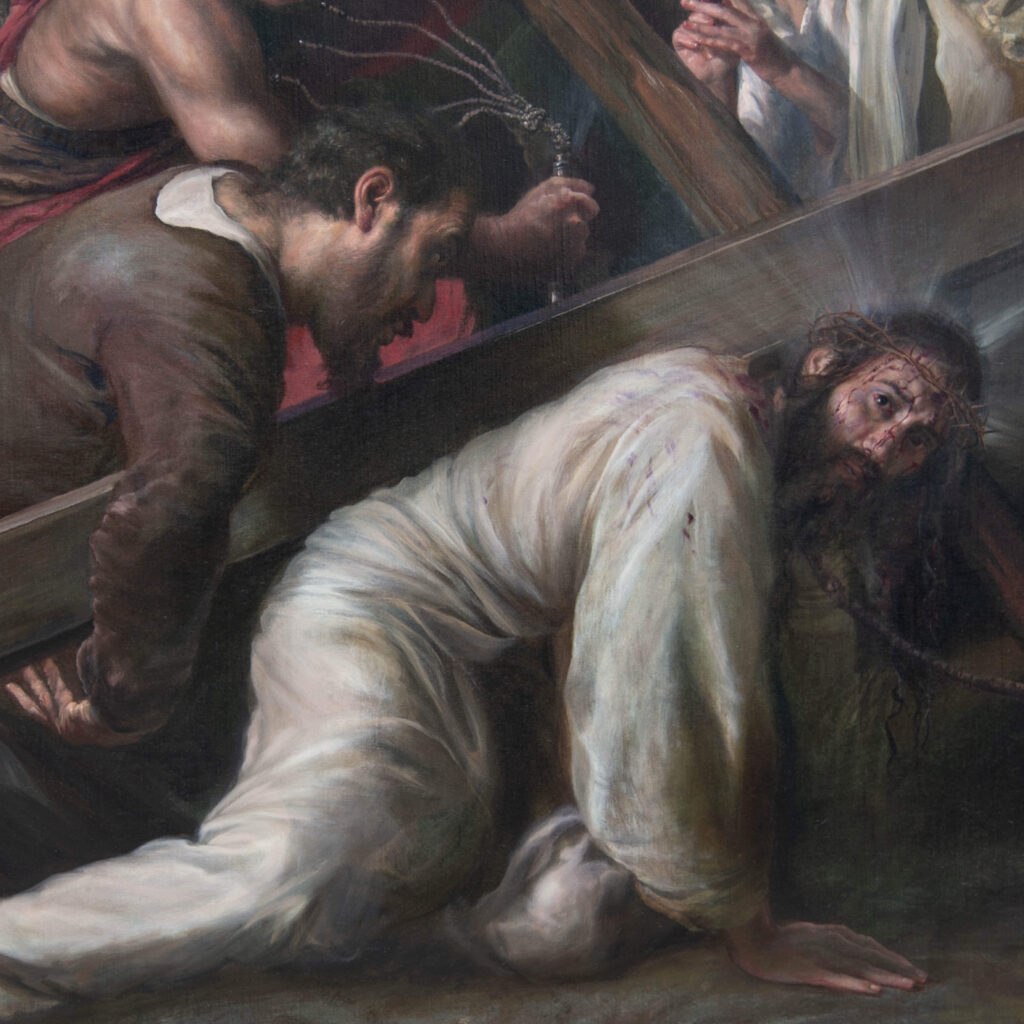
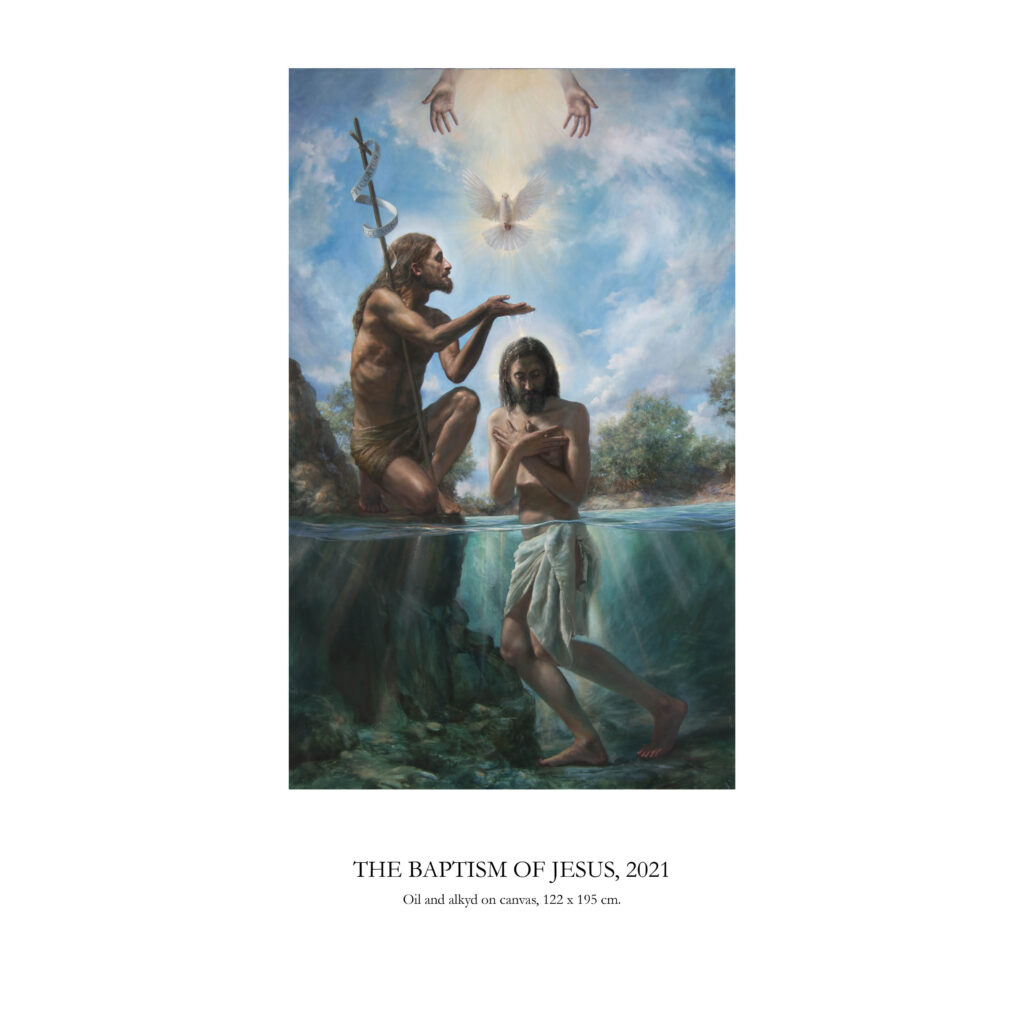
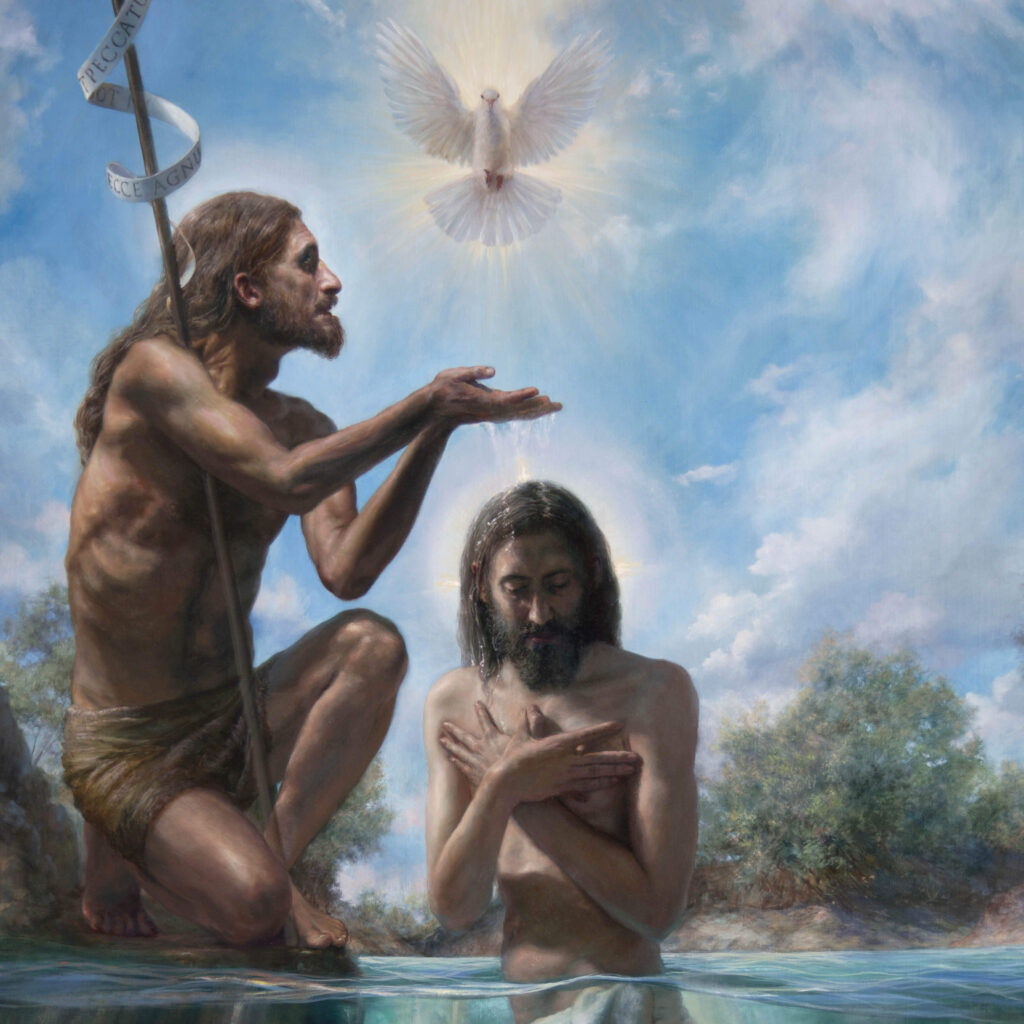
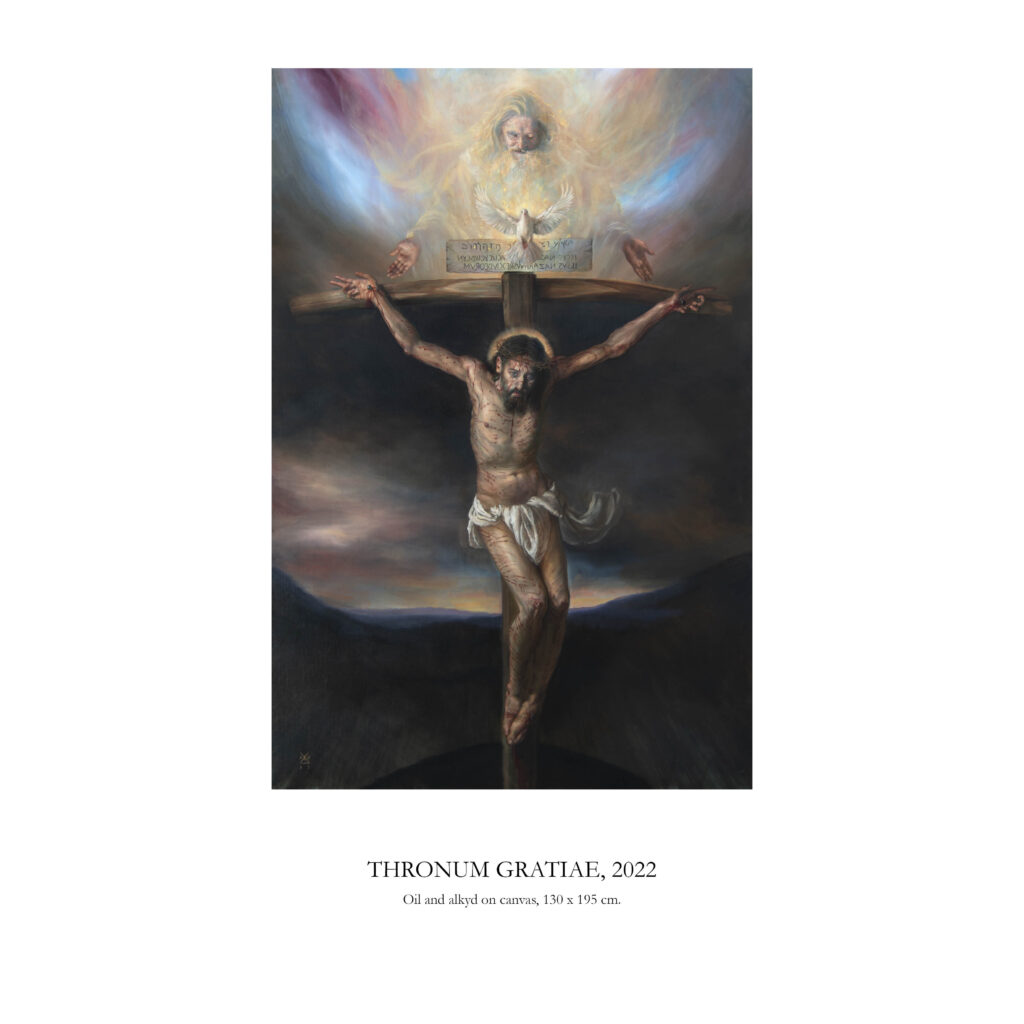
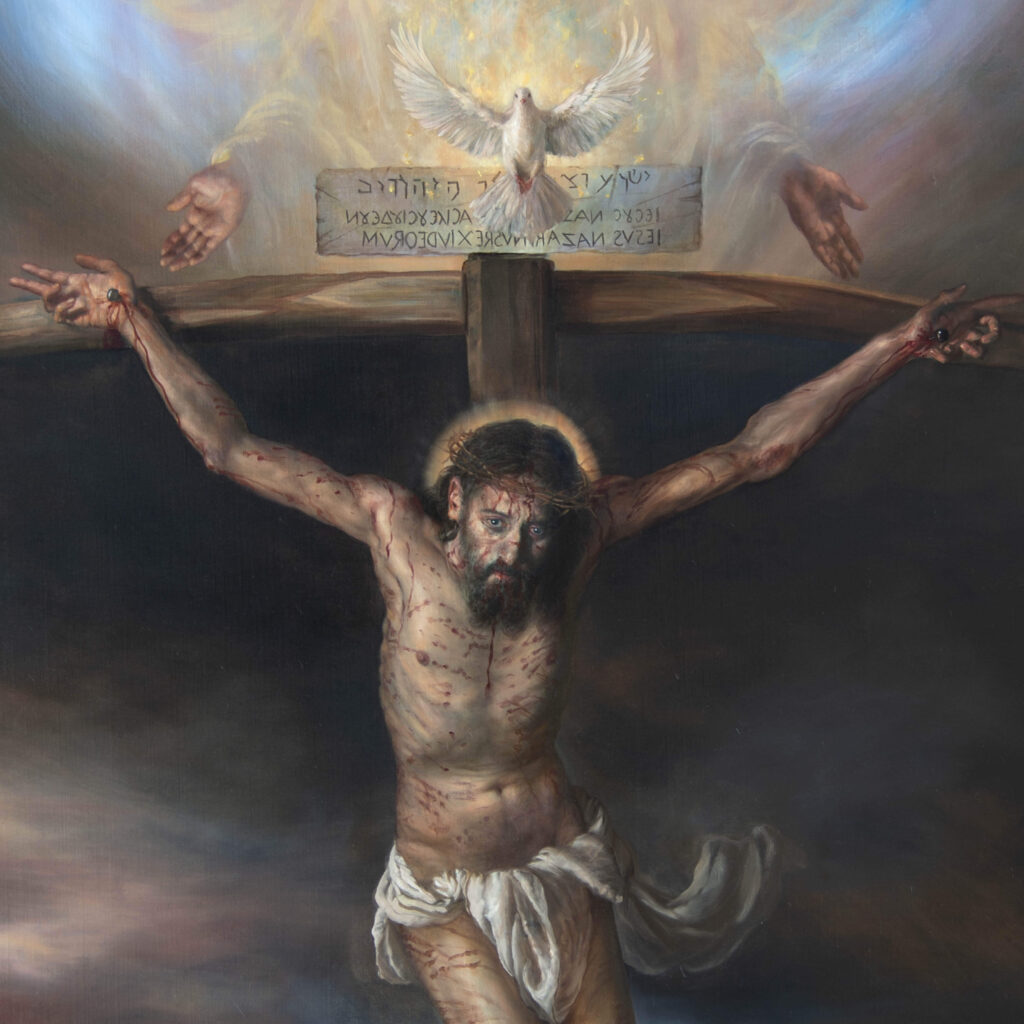
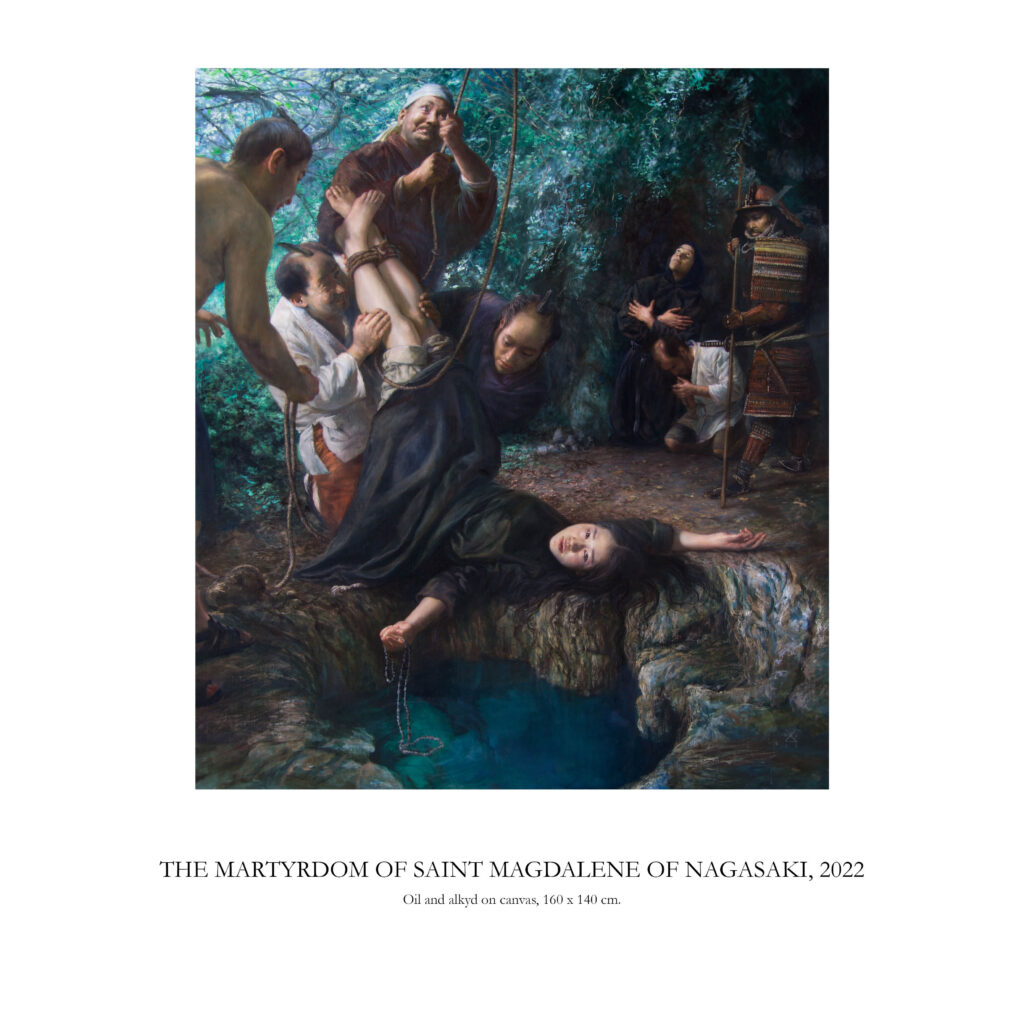


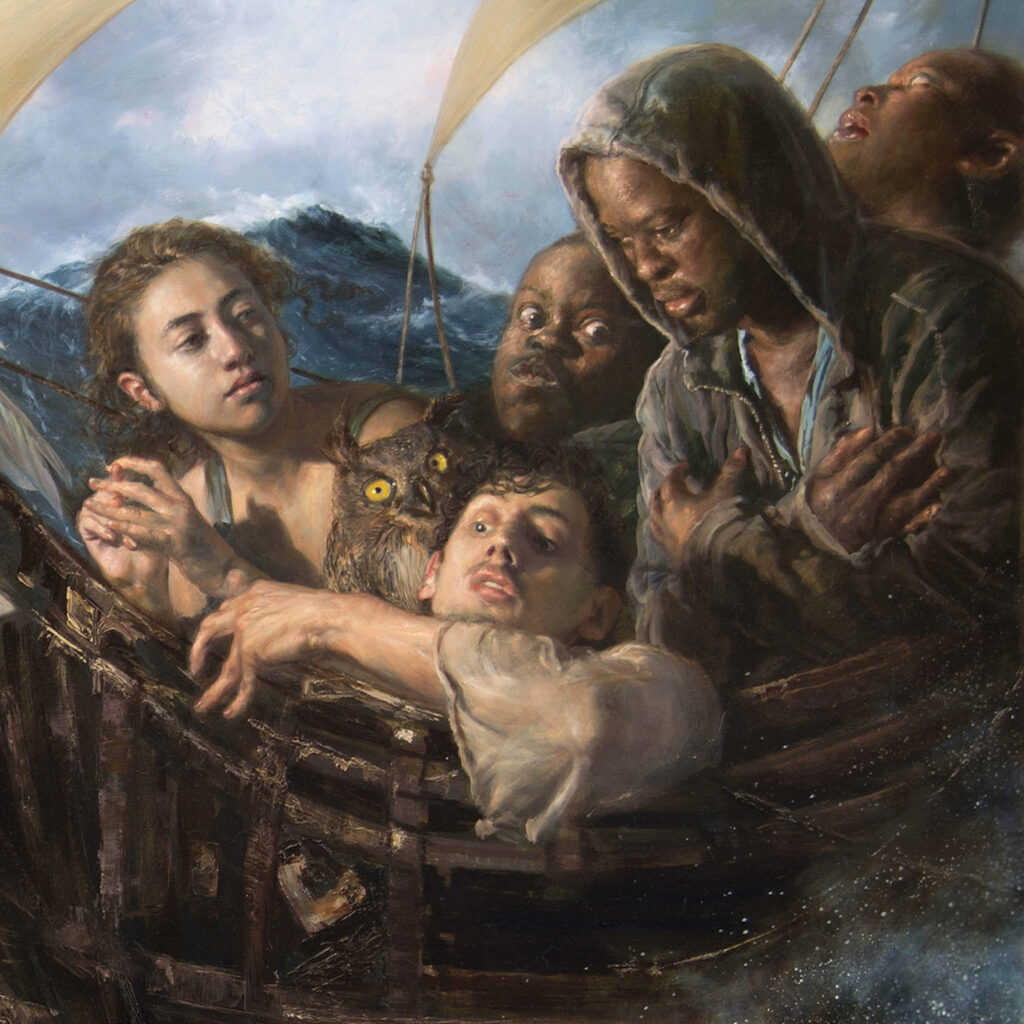
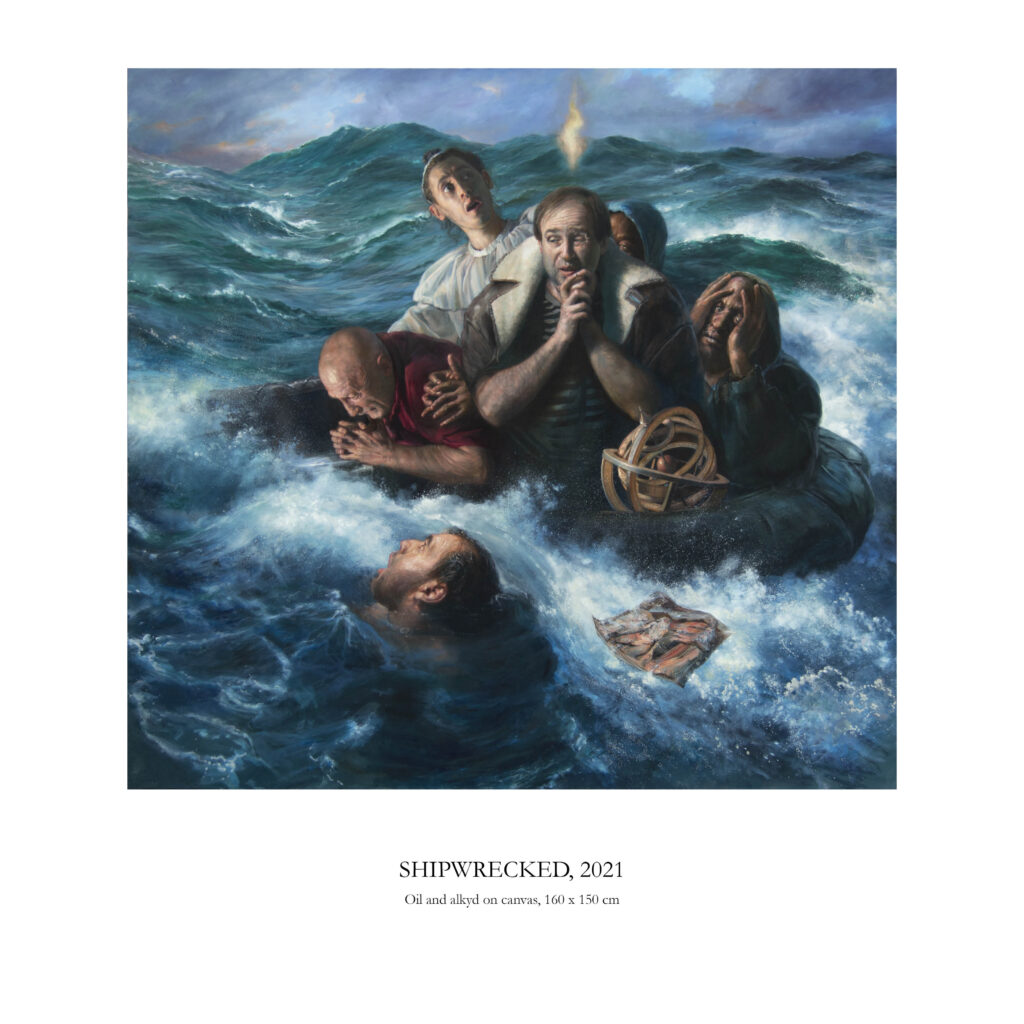
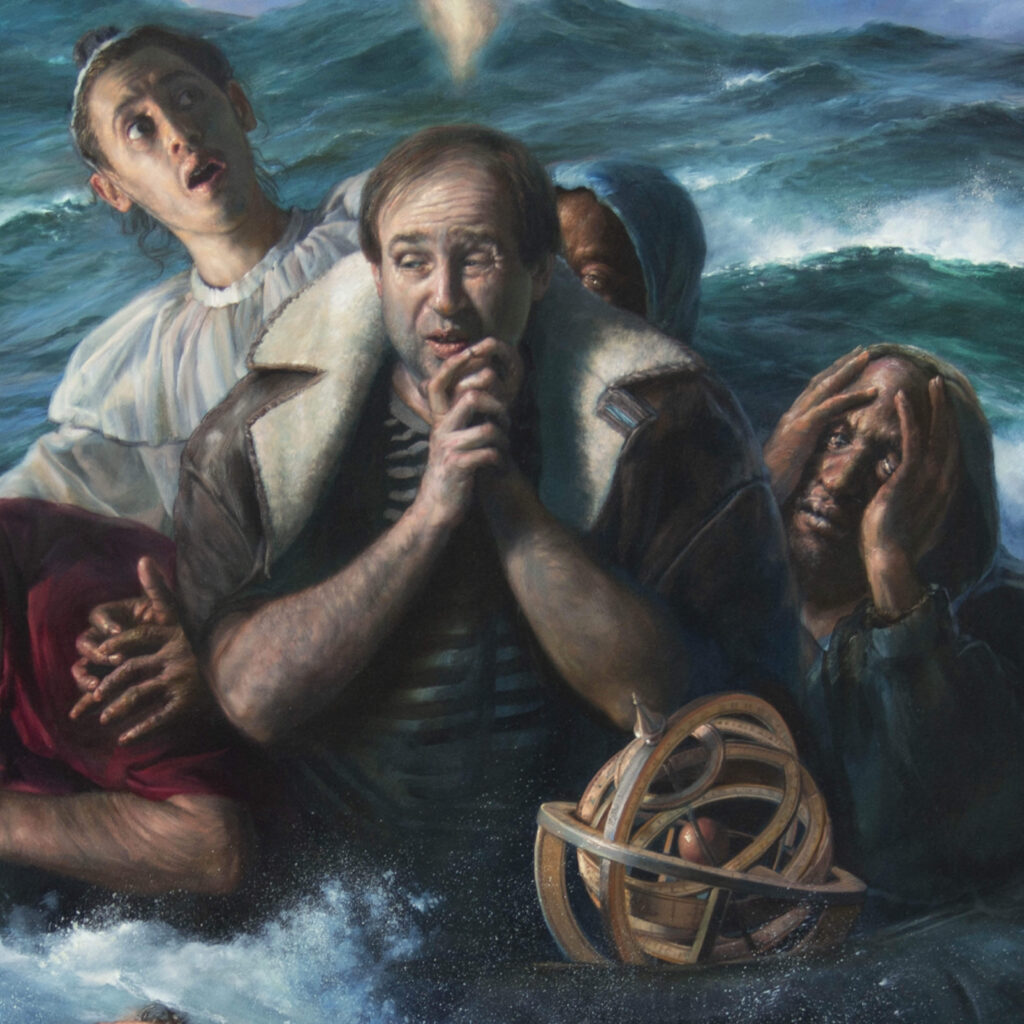
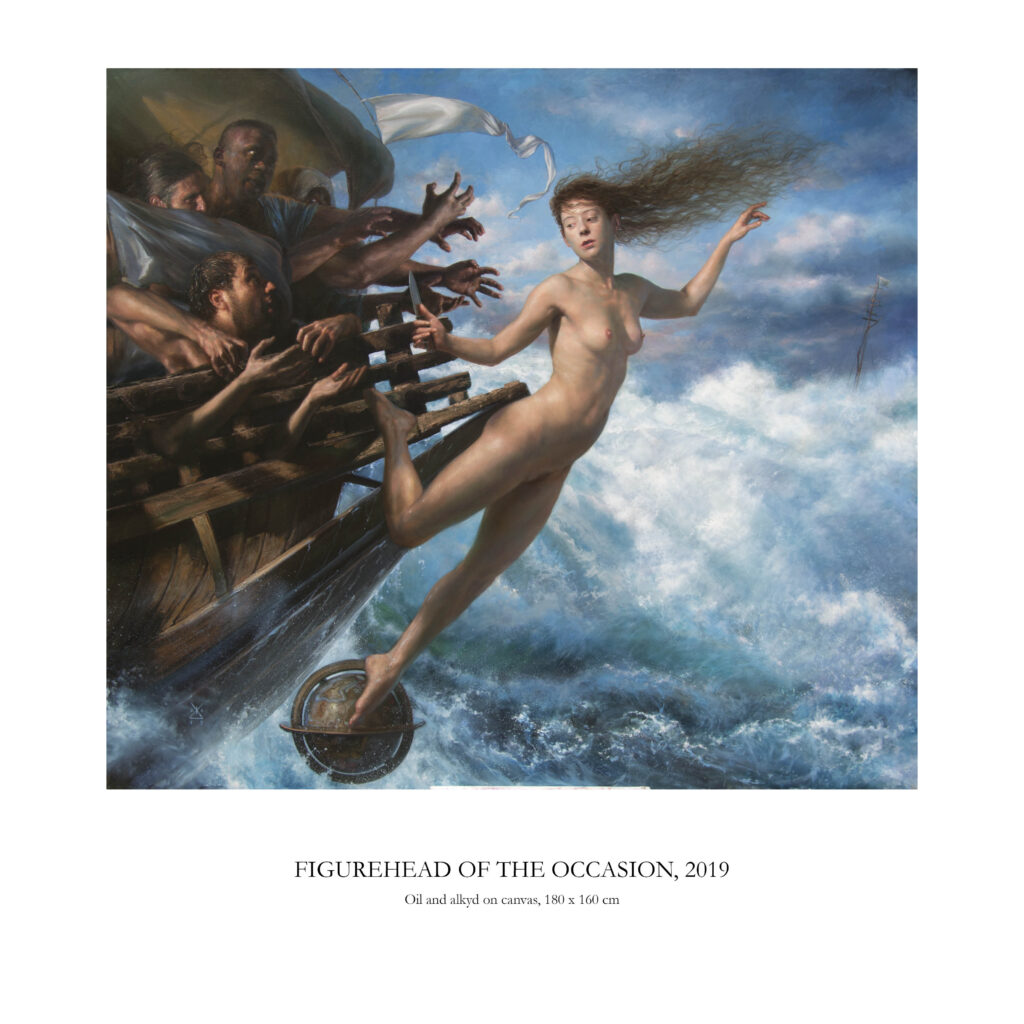
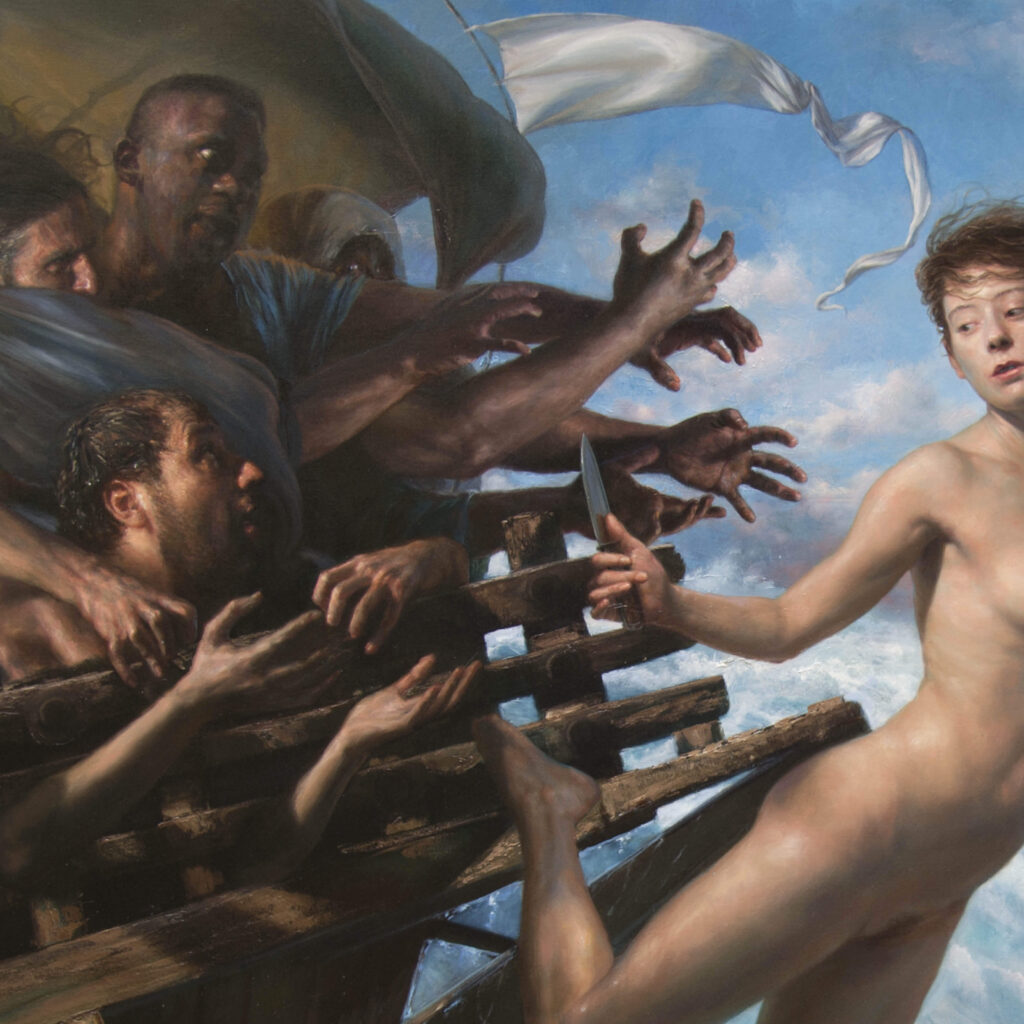
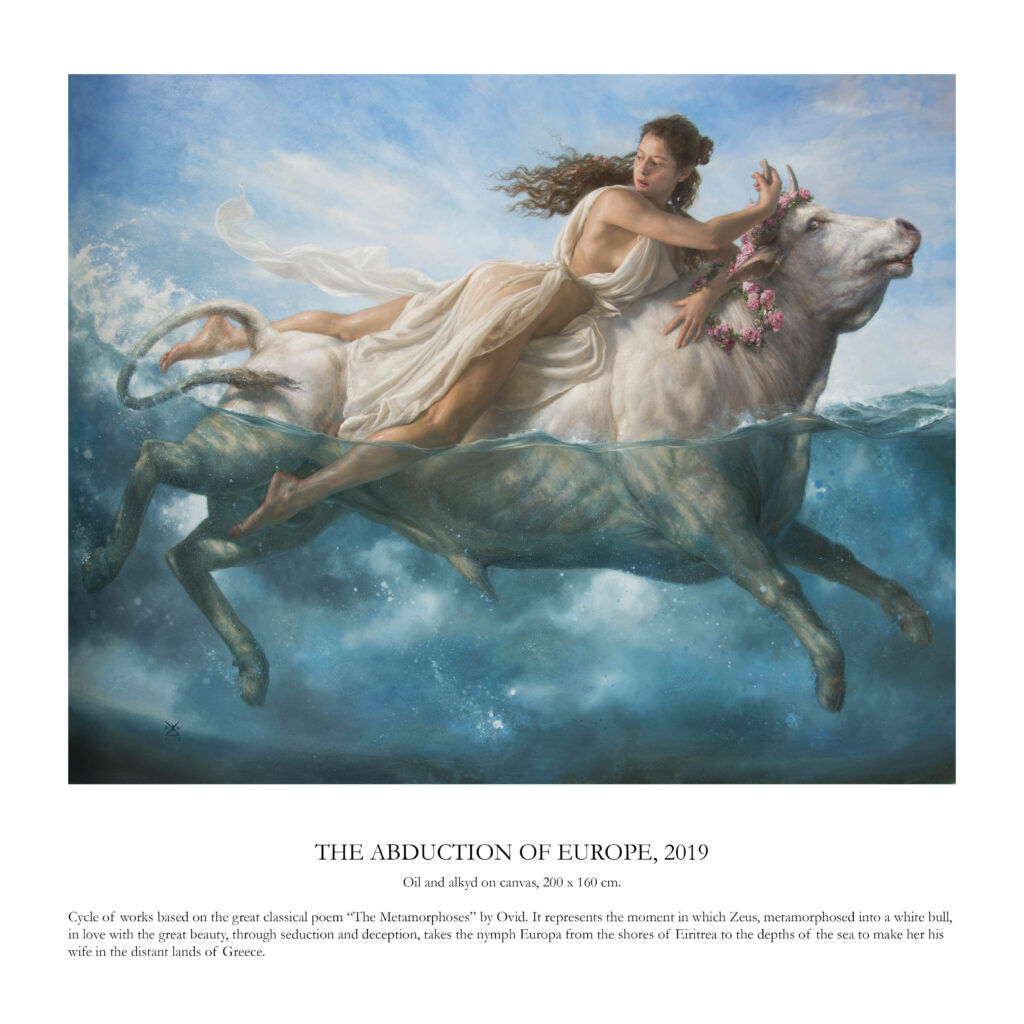
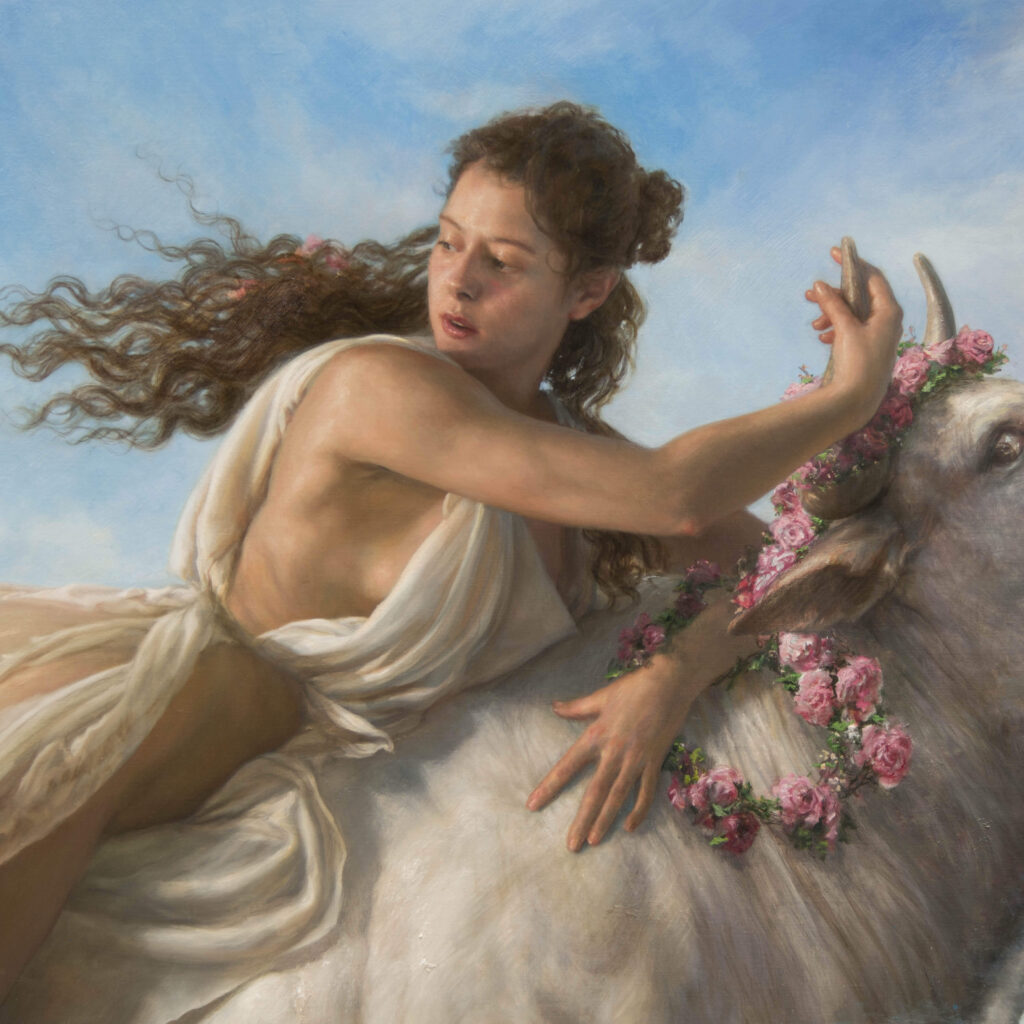
Featured
Antonio Decinti is shortlisted in 2024 as a finalist in the
Via Crucis contest of La Fábrica de San Pedro del Vaticano.
Station 12: Jesus dies on the cross
The Christ is pierced by the spear and blood and water immediately flowed out. Like the bronze serpent he is elevated and attracts us all. The soldier before the Antonine Tower expresses human power against God.
The Mother of the Church, of John and of all, Saint Mary Holyness, accompanied by the rest of Israel, presents herself as a catechumen to receive her martyrdom. Her wound also pierces her agonizing heart. The Good Jesus is already dead, this pain of the spear is for his mother.
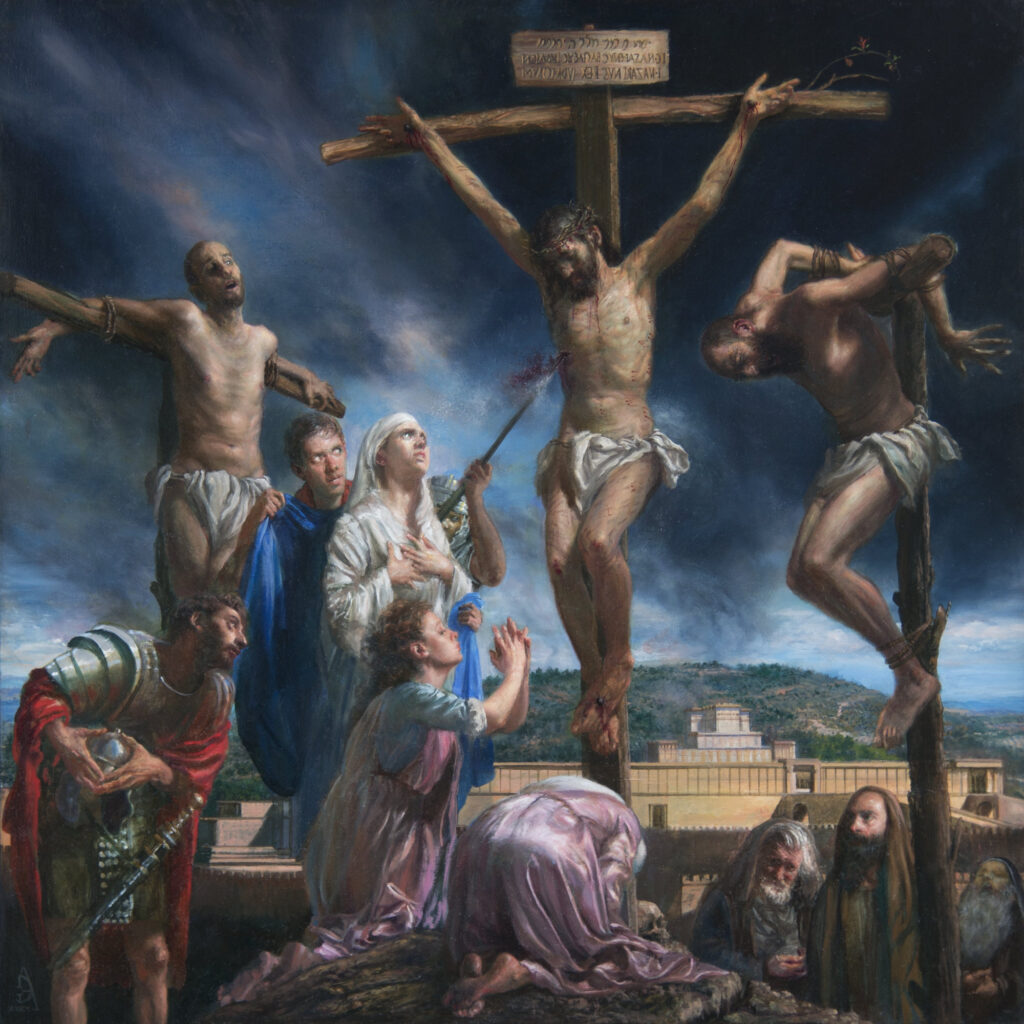
Station 12: Jesus dies on the cross.
Oil on wood 50 x 50 cms, 2024.

Station 13: Jesus is taken down from the cross.
Oil on wood 50 x 50 cms. 2024
Draft of Station 13: Jesus is taken down from the cross
Once Jesus has descended, Saint Mary Holyness is represented as the new living temple of the True God. The Good God has made all things new: his Most Holy Mother presents him as a perfect offering of love. In his hands, as in the manger of Bethlehem, he holds the flesh of his flesh in complete obedience, while three Jews from the rest of Israel, like the Three Wise Men, bring their offerings to the deceased and his Church: Incense, myrrh and the pure shrine are the materials of the mystery of the resurrection. Saint John accompanies and protects like Saint Joseph in the past.
To all who are passionately dedicated to the search for new “epiphanies” of beauty
Saint John Paul II
1999
Letter of his Holiness Pope to artists
Decinti & Decinti
Paintings gallery

Beatriz de la Santa Faz, 2023
Óleo y alquídico sobre lienzo, 120 x 195 cm

Delirio premonitorio, 2023
Óleo y alquídico sobre lienzo, 150 x 130 cm

Ví yacer su cuerpo, 2023
Óleo y alquídico sobre lienzo, 120 x 195 cm
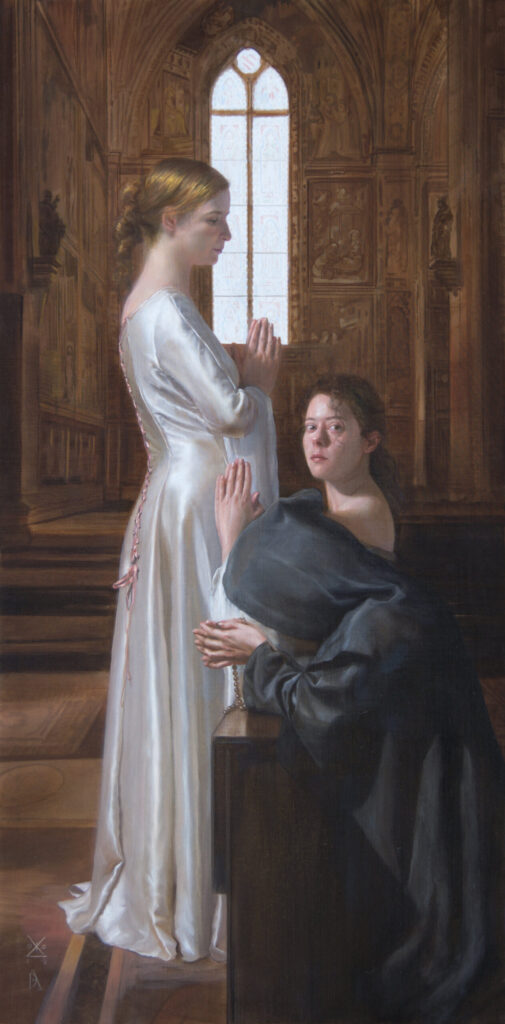
Maravillada de mis miradas, 2023
Óleo y alquídico sobre lienzo, 81 x 162 cm

Corre balada, 2023
Óleo y alquídico sobre lienzo, 150 x 116 cm

Ego dominum tuus, 2023
Óleo y alquídico sobre lienzo, 81 x 162 cm

Mi temblor, 2023
Óleo y alquídico sobre lienzo, 150 x 115 cm

Lucis Custos, 2022
Oil on wood, 42 x 50 cm
Colaborated by
David Conejo (Instagram)
An image close to the Pope’s heart
David Conejo and Pope Francisco

How can we reach the core of cultures ancient and new if we are unfamiliar with, disregard or dismiss their symbols, messages, artistic expressions and the stories with which they have captured and evoked their loftiest ideals and aspirations, as well as their deepest sufferings, fears and passions?
Francis
2024
Letter of His Holiness Pope Francis on the role of literature in formation
Exhibitions
-
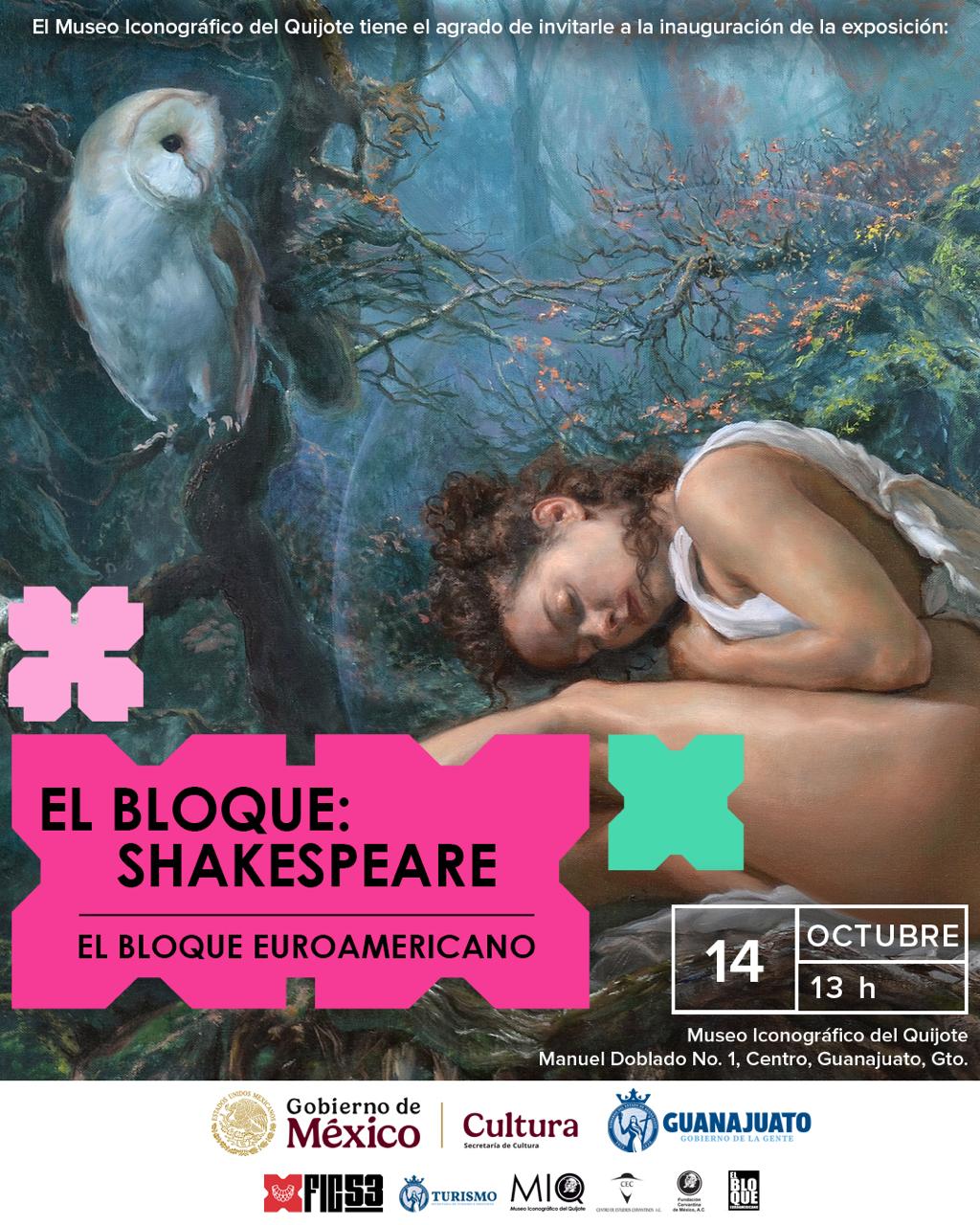
2025 Festival Cervantino. Exposición “El Bloque: Shakespeare”
By decinti On October 5, 2025 · Add Comment [Edit] Título: El Bloque: Shakespeare Pinturas de Heder Contreras, Alejandro Decinti, Antonio Decinti, Oscar Villalón, Rafael Ramírez Máro y Juan Carlos Manjarrez Esculturas de José Luis Ponce y Jonatan Solano En nuestro esforzado camino artístico por la vía pulchritudinis nuestras obras reflexionan junto al Bardo de Avon sobre el poder y la belleza…
-
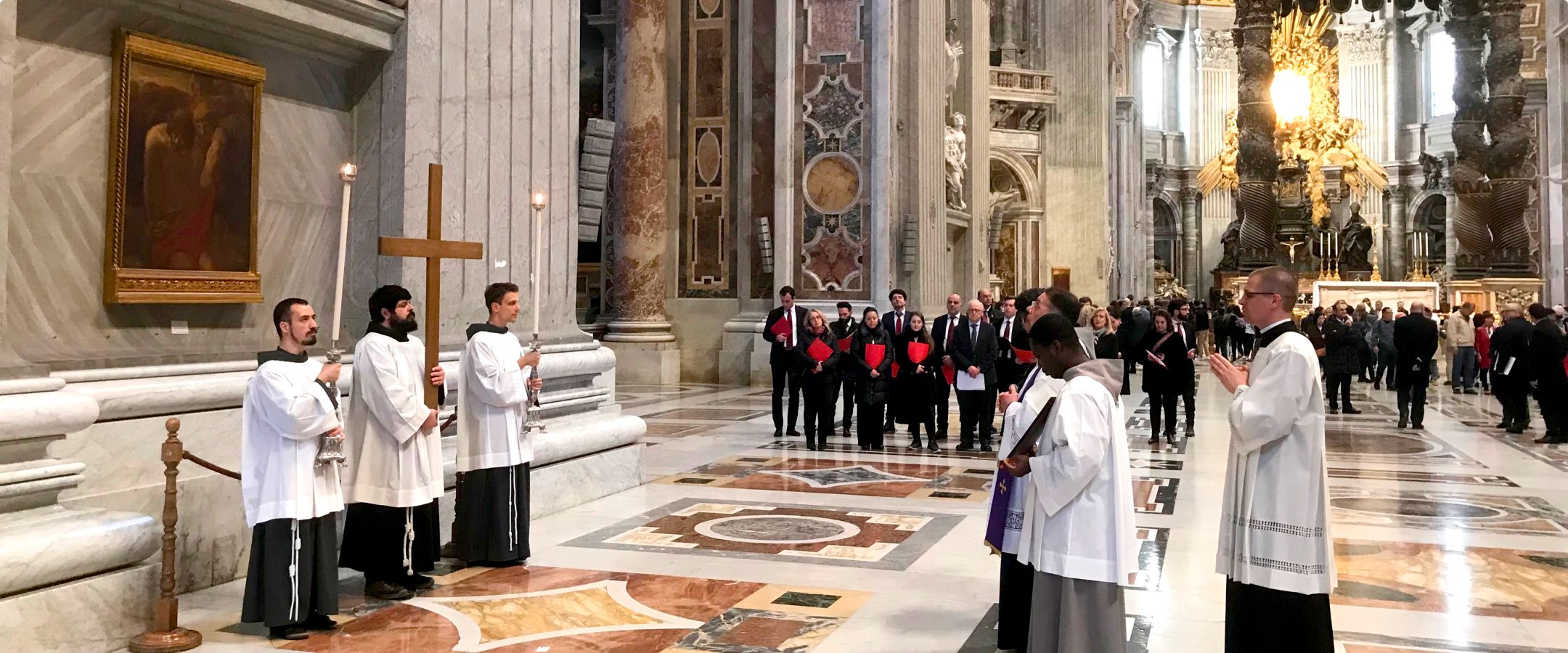
International Competition for the Creation of a Via Crucis for temporary exhibitions in St. Peter’s Basilica, winner announced
The International Competition, launched by the Fabbrica di San Pietro last December, has concluded. The competition aimed to create a unique artistic representation in painting—a Via Crucis in fourteen stations—intended for temporary exhibitions in the Papal Basilica of St. Peter in the Vatican. The initiative received general approval, with over a thousand applications submitted by…
-
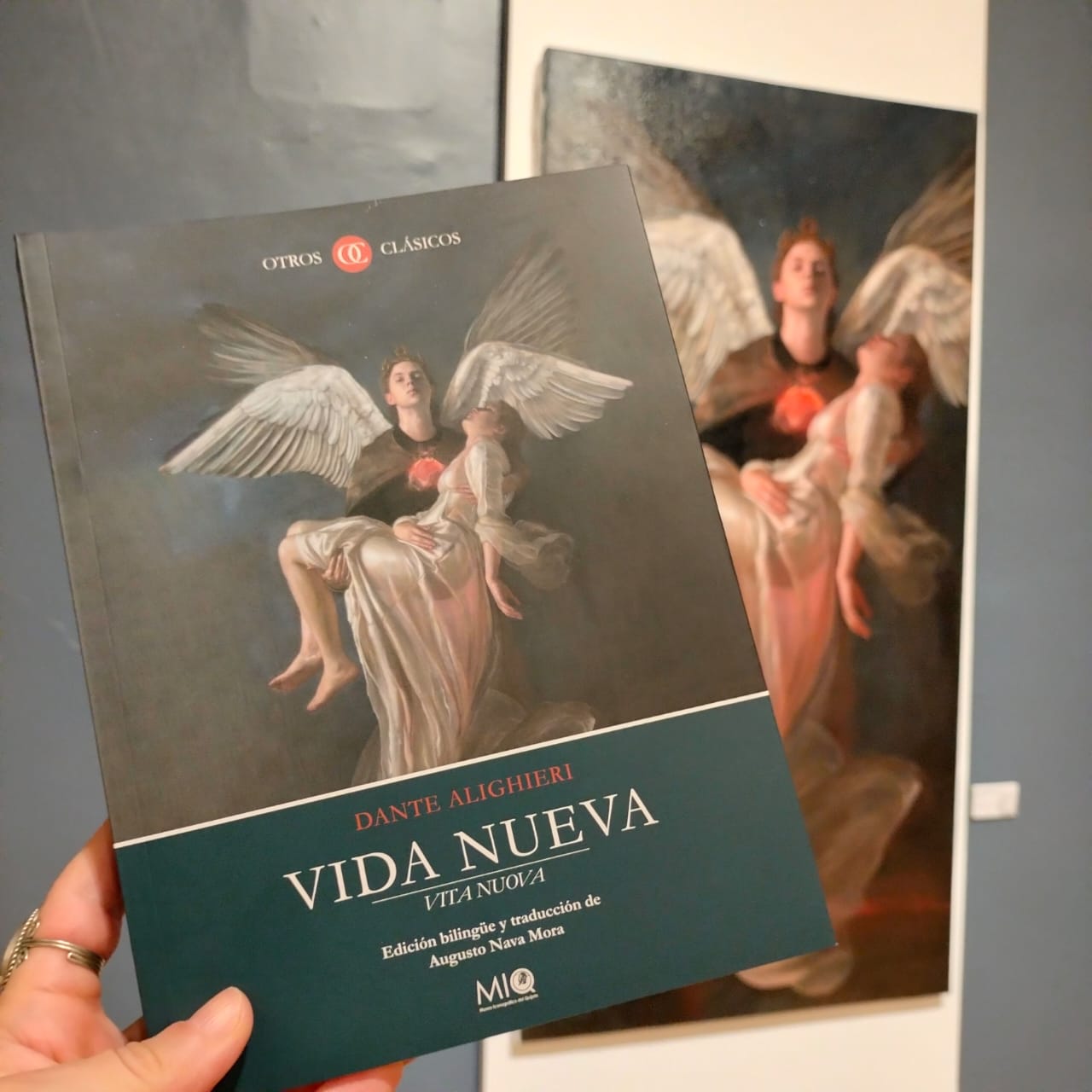
Ego Dominus tuus
A ciascun’alma presa e gentil core Almas y corazones con dolor,a quienes llega mi decir presente(y cada cual responda lo que siente),salud en su señor, que es el Amor.Las estrellas tenían resplandorel más adamantino y más potentecuando adivino el Amor súbitamenteen forma tal que me llenó de horror.Parecíame alegre Amor llevandomi corazón y el cuerpo…
-

2024: «Ego Dominus tuus». MIQ. Guanajuato, México
Conoce la edición bilingüe de «Vita nuova» de Dante Alighieri por Augusto Nava, publicado por nuestro sello #EdicionesMIQ y disfruta de la exposición de pintura inspirada en este clásico de la literatura. Charla editorial e inauguración de exposición «Ego dominus tuus» * Viernes 27 de septiembre 2024 a las 17:30 h Entrada libre *Obras por…
